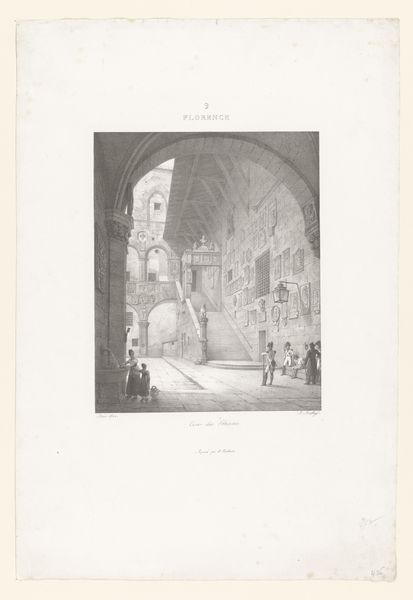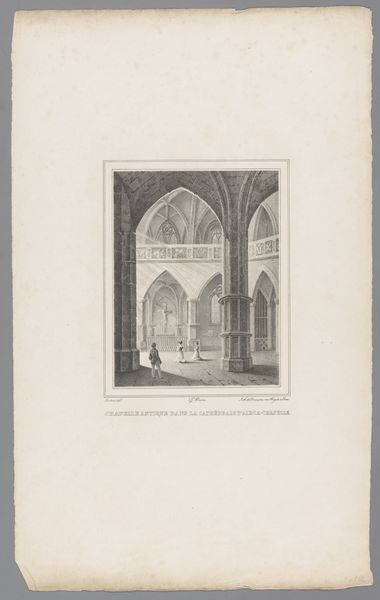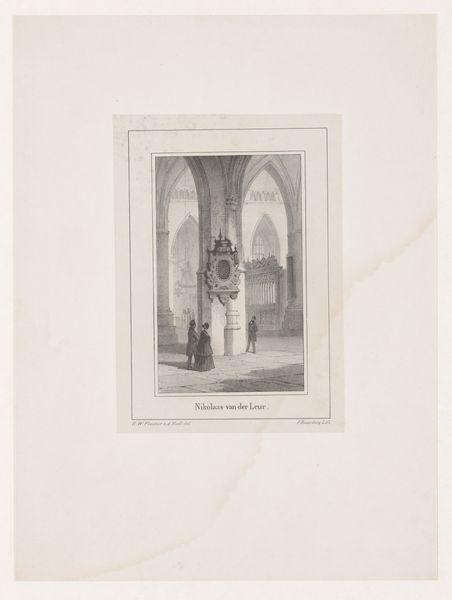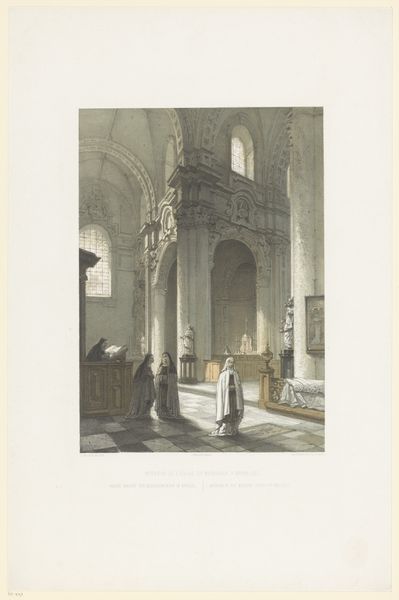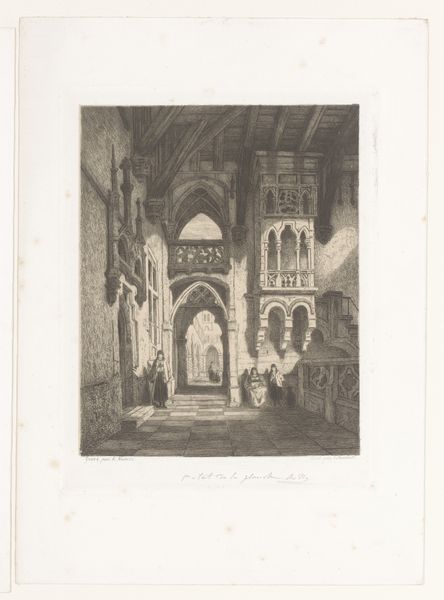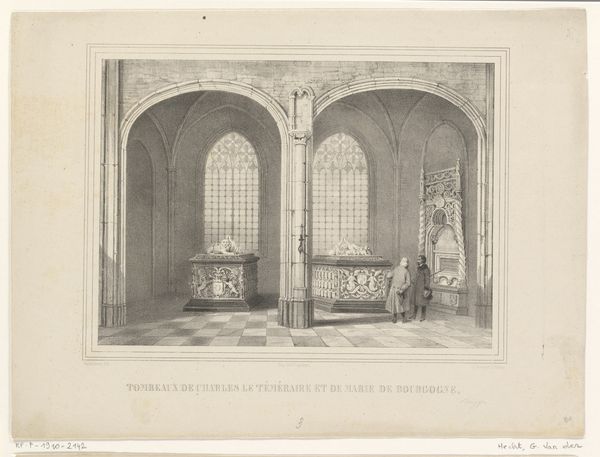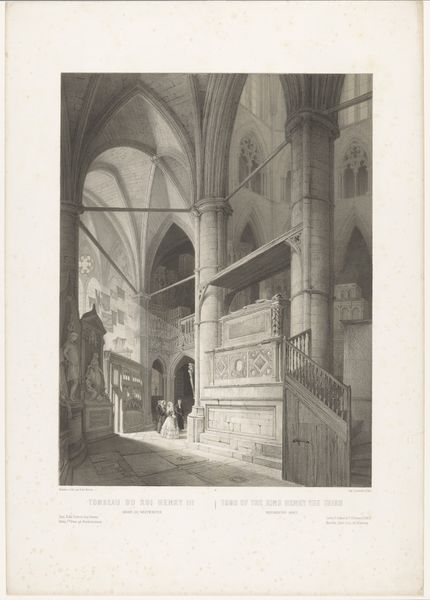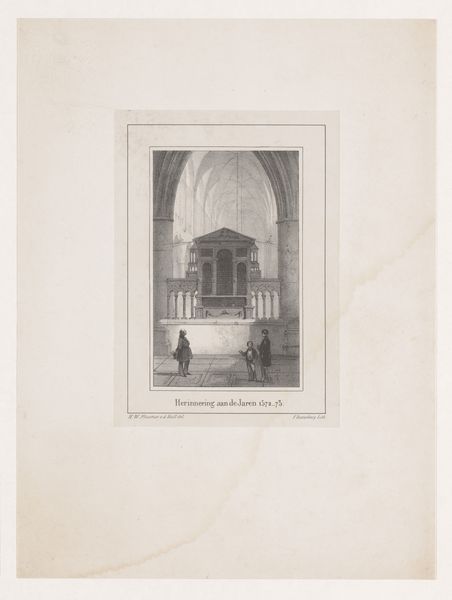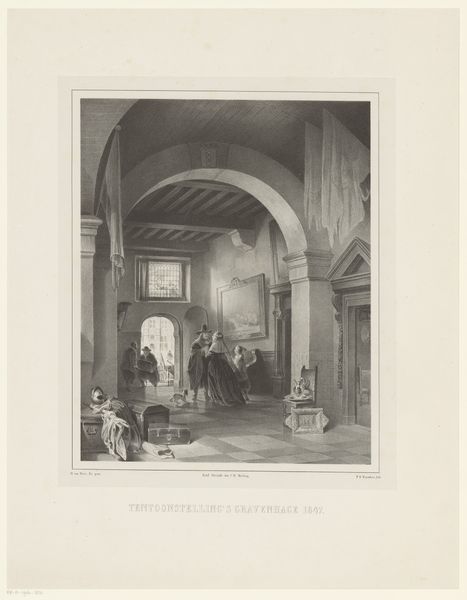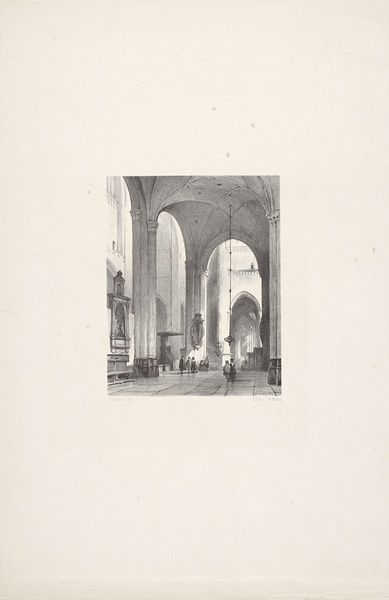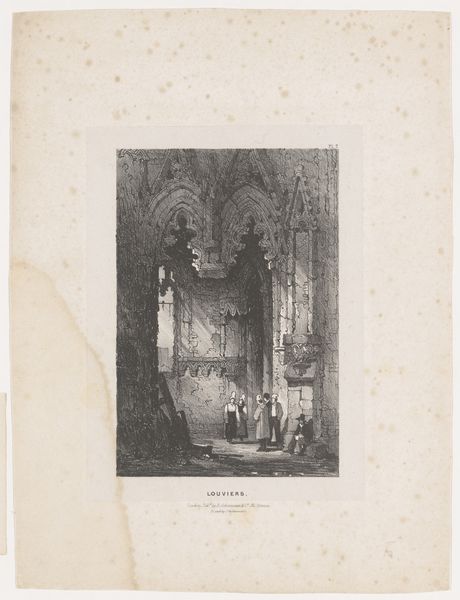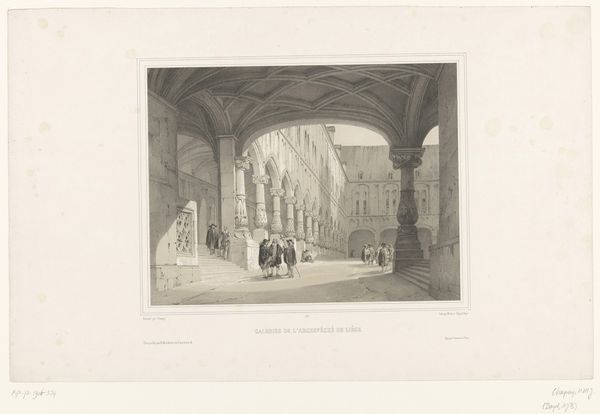
Dimensions: height 525 mm, width 342 mm
Copyright: Rijks Museum: Open Domain
Editor: This is Johannes Bosboom's "Kerkinterieur met geestelijke en graftome," created sometime between 1827 and 1891. It's a drawing, print, and engraving using ink on paper, and the light in the image is really striking. What's your take on this artwork? Curator: The play of light is key, isn’t it? Consider how Bosboom uses it not merely to depict the space, but to activate it. How might the sharp contrast between light and shadow symbolize the tension between the spiritual and the temporal, reflecting the changing role of religion in 19th-century society? Editor: That's interesting. I was just thinking about the atmosphere of reverence and awe it creates. Curator: Precisely. Bosboom's interiors aren’t just architectural studies; they're charged with socio-political commentary. The solitary figure invites reflection on individual spirituality versus institutional power, don't you think? And note the tomb: how does the artist subtly challenge notions of power and legacy through his representation of death and remembrance? Editor: So, by placing this figure near the tomb, Bosboom is making a statement about power and legacy? Curator: Exactly! Who gets remembered? How? And what does that say about the structures that dictate those narratives? He questions those narratives through seemingly simple scenes. The artist challenges us to confront these unspoken hierarchies within religious and social institutions. Editor: I never thought about it that way. I was focusing more on the aesthetic beauty, but now I see the deeper layers. Thanks for sharing that. Curator: And thank you for bringing fresh eyes to the work! It is in this dialogue between different perspectives that we begin to dismantle old certainties.
Comments
No comments
Be the first to comment and join the conversation on the ultimate creative platform.
